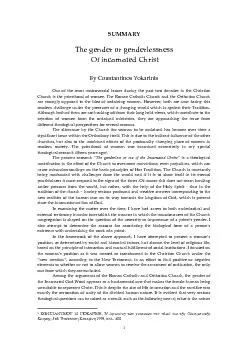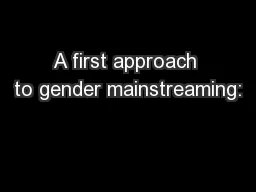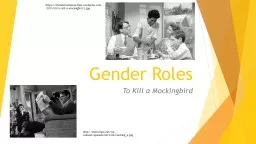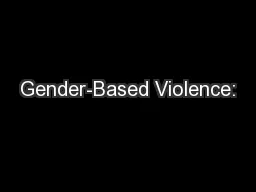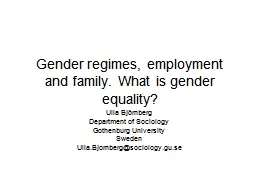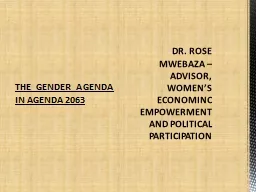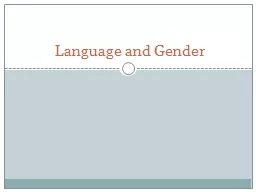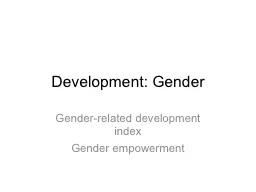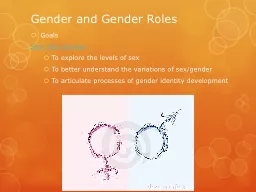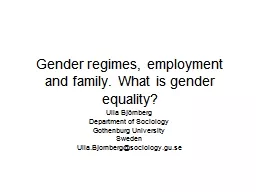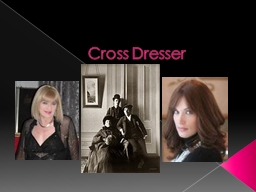PDF-The gender or genderlessness
Author : trish-goza | Published Date : 2015-08-12
1 SUMMARY Of incarnated Christ By C onstantinos Yokarinis One of the most controversial issues during the past two de c ades in the Christian Church is the priesthood
Presentation Embed Code
Download Presentation
Download Presentation The PPT/PDF document "The gender or genderlessness" is the property of its rightful owner. Permission is granted to download and print the materials on this website for personal, non-commercial use only, and to display it on your personal computer provided you do not modify the materials and that you retain all copyright notices contained in the materials. By downloading content from our website, you accept the terms of this agreement.
The gender or genderlessness: Transcript
1 SUMMARY Of incarnated Christ By C onstantinos Yokarinis One of the most controversial issues during the past two de c ades in the Christian Church is the priesthood of women The Roman Catholic Ch. Introduction to Women. ’. s Studies. Robert Wonser. Gender and the Media. According to the . reflection hypothesis . the media only give the public what it expects, wants, or demands. . In other words, the media content mirrors the behaviors and relationships, and values and norms most prevalent in society.. Women’s Handicraft . Exports Program in Cusco, Peru.. Financial & Private Development Sector Forum: . Female Entrepreneurship: What do we know? What is next?. April 6. th. , 2011. Introduction. To Kill a Mockingbird. http://staticmass.net/wp-content/uploads/2012/02/mocking_4.jpg. https://irissansfrontieres.files.wordpress.com/2015/03/to-kill-a-mockngbird-2.jpg. Create Your Own List. What kinds of messages are conveyed when you hear . Tackling the Menace. By. Josephine . Effah-Chukwuma. Executive Director. Project Alert . On Violence Against . Women. Understanding Gender-based Violence (GBV). Forms of GBV. GBV: Prevalence and Context. Ulla Björnberg. Department of Sociology. Gothenburg University. Sweden . Ulla.Bjornberg@sociology.gu.se. Paid work and gender equality. Implications for gender equality is dependant on region and class. DR. ROSE MWEBAZA – ADVISOR, WOMEN’S ECONOMINC EMPOWERMENT AND POLITICAL PARTICIPATION. The vision of Africa expressed in Agenda 2063 is one of an Africa . whose development is people-driven, especially . WHAT IT COULD ACHIEVE. Emma Ritch, Director, Engender . GENDER BUDGET ANALYSIS. PROCESS AND PRIORITIES. LEVELS OF SPENDING. EXAMPLE ONE: . MODERN APPRENTICESHIPS . ~£75m programme supplying Scottish labour market with intermediate skills . Language and Gender is…. Language and gender. is an area of study within sociolinguistics, applied linguistics, and related fields that investigates varieties of speech associated with a particular gender, or social norms for such gendered language . Gender-related development index. Gender empowerment. Gender Inequalities. According to the UN there is not a single country in the world where its women are treated as well as its men.. Gender inequalities exists in every country of the world. La gamme de thé MORPHEE vise toute générations recherchant le sommeil paisible tant désiré et non procuré par tout types de médicaments. Essentiellement composé de feuille de morphine, ce thé vous assurera d’un rétablissement digne d’un voyage sur . Star Trek Gender. To . explore the levels of sex. To . better understand the variations of sex/gender. To articulate processes of gender identity development. How Many Sexes Are There?. Genetic/chromosomal sex. Ulla Björnberg. Department of Sociology. Gothenburg University. Sweden . Ulla.Bjornberg@sociology.gu.se. Paid work and gender equality. Implications for gender equality is dependant on region and class. Gender identity. Gender . dysphoria. Gender reassignment . (sex change). Gender transition. Intersexed. Transgender/Transsexual. Male-to-Female (MTF). Female-to-Male (FTM). Clinical Issues. Questions and . gender-sensitive workplace. Session 6: Analysis and validation of data. Reconciling . s. ources of evidence. 2. Iterative Process - Feedback Loops. Identifying root causes. In the analysis, it is important to distinguish symptoms from root causes. .
Download Document
Here is the link to download the presentation.
"The gender or genderlessness"The content belongs to its owner. You may download and print it for personal use, without modification, and keep all copyright notices. By downloading, you agree to these terms.
Related Documents

